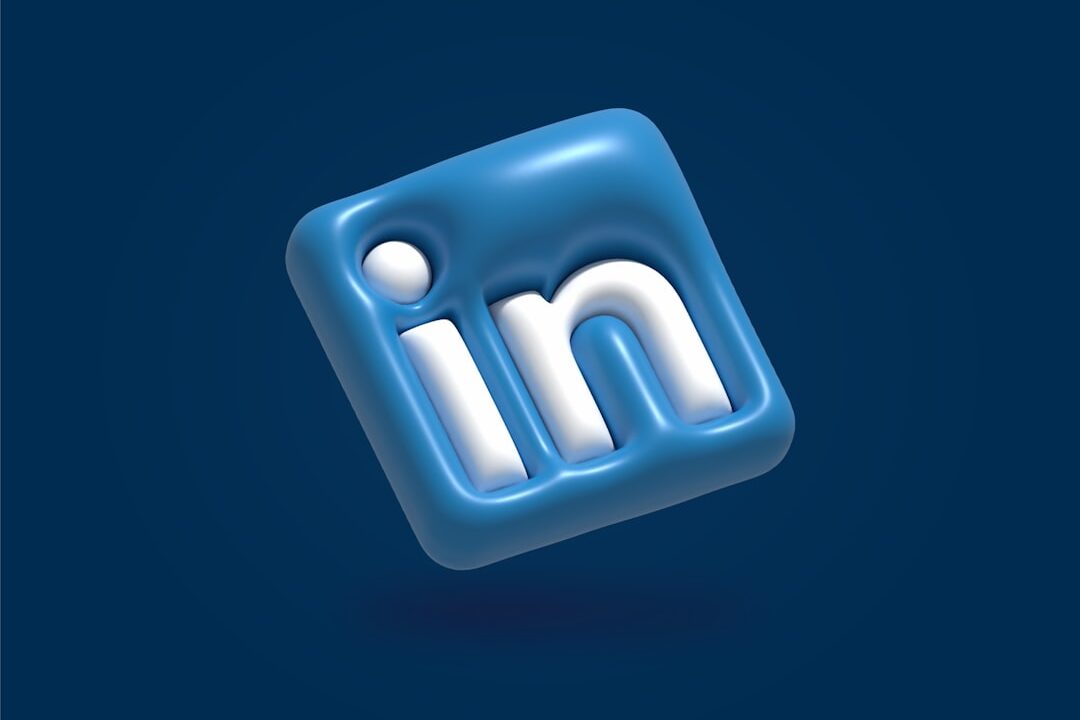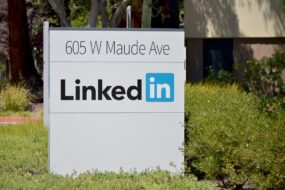
As I delve into the world of professional networking, I find that LinkedIn stands out as a powerful tool for lead generation. With over 900 million users globally, it offers a unique platform where professionals can connect, share insights, and explore business opportunities. Unlike other social media platforms, LinkedIn is specifically designed for professional interactions, making it an ideal space for me to identify potential clients and partners.
The ability to showcase my expertise and engage with industry leaders allows me to position myself as a thought leader in my field, which is crucial for attracting the right audience. Moreover, LinkedIn’s algorithm favors meaningful interactions, which means that the more I engage with my network, the more visibility I gain. This creates a ripple effect; as I share valuable content and insights, I not only enhance my credibility but also increase the likelihood of being discovered by potential clients.
The platform’s focus on professional development and networking makes it an invaluable resource for anyone looking to grow their business or expand their client base. By understanding how to leverage LinkedIn effectively, I can tap into a wealth of opportunities that can significantly impact my lead generation efforts.
Key Takeaways
- LinkedIn is a powerful tool for lead generation, offering access to a vast network of professionals and potential clients.
- Building a strong profile is essential for attracting potential clients, including a professional photo, compelling headline, and detailed summary.
- Leveraging content and engagement on LinkedIn can help expand your network and establish credibility in your industry.
- Utilizing LinkedIn groups and communities allows for targeted outreach to specific demographics or industries.
- Advanced search and filters on LinkedIn can help identify ideal clients based on specific criteria such as industry, location, and job title.
Building a Strong Profile to Attract Potential Clients
Professional Profile Picture
To achieve this, I start by ensuring that my profile picture is high-quality and reflects my professional demeanor. A well-chosen image can make a lasting first impression, and I want to ensure that it aligns with the image I wish to project in my industry.
Crafting a Captivating Headline and Summary
Next, I focus on crafting a captivating headline and summary that encapsulate my skills and experiences. Instead of simply listing my job title, I aim to highlight what sets me apart from others in my field. By incorporating relevant keywords related to my industry, I increase the chances of being discovered by those searching for specific expertise.
Telling My Story
My summary is an opportunity to tell my story—why I do what I do, what drives me, and how I can help potential clients achieve their goals. This personal touch not only makes my profile more relatable but also establishes a connection with those who visit it.
Leveraging Content and Engagement to Expand Your Network

Content creation is another powerful strategy I employ to expand my network on LinkedIn. By sharing articles, insights, and updates related to my industry, I position myself as a knowledgeable resource. I understand that valuable content not only attracts attention but also encourages engagement from my connections and beyond.
When I share informative posts or thought-provoking articles, I invite discussions that can lead to meaningful connections with potential clients. Engagement is equally important; I make it a point to interact with the content shared by others in my network. By liking, commenting on, and sharing posts from industry leaders and peers, I demonstrate my interest in their work while also increasing my visibility.
This reciprocal engagement fosters relationships and encourages others to engage with my content in return. As I build these connections through meaningful interactions, I create a network of professionals who are more likely to refer me to potential clients or collaborate on projects.
Utilizing LinkedIn Groups and Communities for Targeted Outreach
LinkedIn groups and communities are treasure troves for targeted outreach, and I actively seek out those that align with my niche. Joining these groups allows me to connect with like-minded professionals who share similar interests and challenges. Within these communities, I can participate in discussions, share insights, and offer assistance where needed.
This not only positions me as an expert but also helps me build relationships with potential clients who may be seeking solutions that I can provide. I also take the time to initiate conversations within these groups by asking questions or sharing relevant content. By being an active participant rather than just a passive observer, I increase my visibility and credibility within the community.
Additionally, I can identify individuals who are particularly engaged or who express needs that align with my services. This targeted approach allows me to reach out to potential clients in a more personalized manner, making it easier to establish rapport and trust.
Using Advanced Search and Filters to Identify Ideal Clients
One of the most powerful features of LinkedIn is its advanced search functionality, which I utilize to identify my ideal clients effectively. By using filters such as industry, location, company size, and job title, I can narrow down my search to find individuals who fit my target demographic. This targeted approach saves me time and ensures that my outreach efforts are focused on those who are most likely to benefit from my services.
I often create lists of potential clients based on these searches, allowing me to keep track of whom I want to connect with or engage further. This organized method not only streamlines my lead generation process but also helps me tailor my messaging based on the specific needs of each individual or company. By understanding their background and interests through their profiles, I can craft personalized outreach messages that resonate with them on a deeper level.
Crafting Personalized Messages and InMail to Initiate Conversations

Showing Genuine Interest
I make it a priority to craft messages that reflect genuine interest in the recipient’s work or achievements. Instead of sending generic connection requests or InMails, I take the time to mention something specific about their profile or recent activity that caught my attention.
Concise and Clear Value Proposition
This personal touch not only increases the likelihood of a positive response but also sets the stage for a meaningful conversation. In addition to personalizing my messages, I ensure that they are concise and clear about the value I can offer. Whether I’m reaching out for collaboration opportunities or simply introducing myself, I focus on how our connection could be mutually beneficial.
This approach has proven effective in converting initial conversations into valuable relationships that can lead to future business opportunities.
Nurturing Relationships and Converting Connections into Clients
Once I’ve established connections on LinkedIn, nurturing those relationships becomes essential for converting them into clients. I understand that building trust takes time; therefore, I prioritize consistent engagement with my connections. This could involve sharing relevant content that aligns with their interests or simply checking in periodically to see how they are doing.
By staying top-of-mind without being overly pushy, I create an environment where potential clients feel comfortable reaching out when they need assistance. I also look for opportunities to provide value beyond just promoting my services. Whether it’s offering free resources, sharing industry insights, or connecting them with others in my network who could help them, I aim to be a resource rather than just a salesperson.
This approach fosters goodwill and positions me as someone who genuinely cares about their success. As trust builds over time, many of these connections naturally evolve into client relationships as they recognize the value I bring.
Measuring and Analyzing Your LinkedIn Lead Generation Efforts
To ensure that my lead generation efforts on LinkedIn are effective, I make it a point to measure and analyze my activities regularly. By tracking metrics such as connection requests sent, response rates, engagement levels on posts, and the number of leads generated from specific outreach efforts, I gain valuable insights into what works and what doesn’t. This data-driven approach allows me to refine my strategies continuously.
I also pay attention to qualitative feedback from conversations with connections. Understanding their pain points and needs helps me adjust my messaging and content strategy accordingly. By analyzing both quantitative metrics and qualitative insights, I can create a more targeted approach that resonates with potential clients.
Ultimately, this ongoing evaluation process ensures that I’m not just generating leads but also building meaningful relationships that contribute to long-term success on LinkedIn. In conclusion, leveraging LinkedIn for lead generation requires a strategic approach that encompasses building a strong profile, engaging with content, utilizing groups for outreach, employing advanced search techniques, crafting personalized messages, nurturing relationships, and measuring efforts effectively. By embracing these strategies, I’ve been able to harness the full potential of LinkedIn as a powerful tool for growing my professional network and converting connections into valuable clients.
FAQs
What is LinkedIn lead generation?
LinkedIn lead generation is the process of identifying and attracting potential clients or customers through the professional networking platform LinkedIn. It involves creating and nurturing relationships with individuals and businesses in order to convert them into clients.
Why is LinkedIn a valuable platform for lead generation?
LinkedIn is a valuable platform for lead generation because it is specifically designed for professional networking and business connections. It has a large user base of professionals and decision-makers, making it an ideal place to find and connect with potential clients.
What are some strategies for lead generation on LinkedIn?
Some strategies for lead generation on LinkedIn include optimizing your profile for search, regularly sharing valuable content, engaging with your network through comments and messages, joining and participating in relevant groups, and using LinkedIn’s advanced search features to find potential leads.
How can I turn connections into clients on LinkedIn?
Turning connections into clients on LinkedIn involves building and nurturing relationships with your connections, providing value through your content and interactions, and eventually converting those connections into clients through personalized messaging and offers.
What are some best practices for lead generation on LinkedIn?
Some best practices for lead generation on LinkedIn include having a complete and professional profile, being active and consistent in your interactions and content sharing, personalizing your outreach messages, and measuring and analyzing your results to continually improve your lead generation efforts.










No Comments